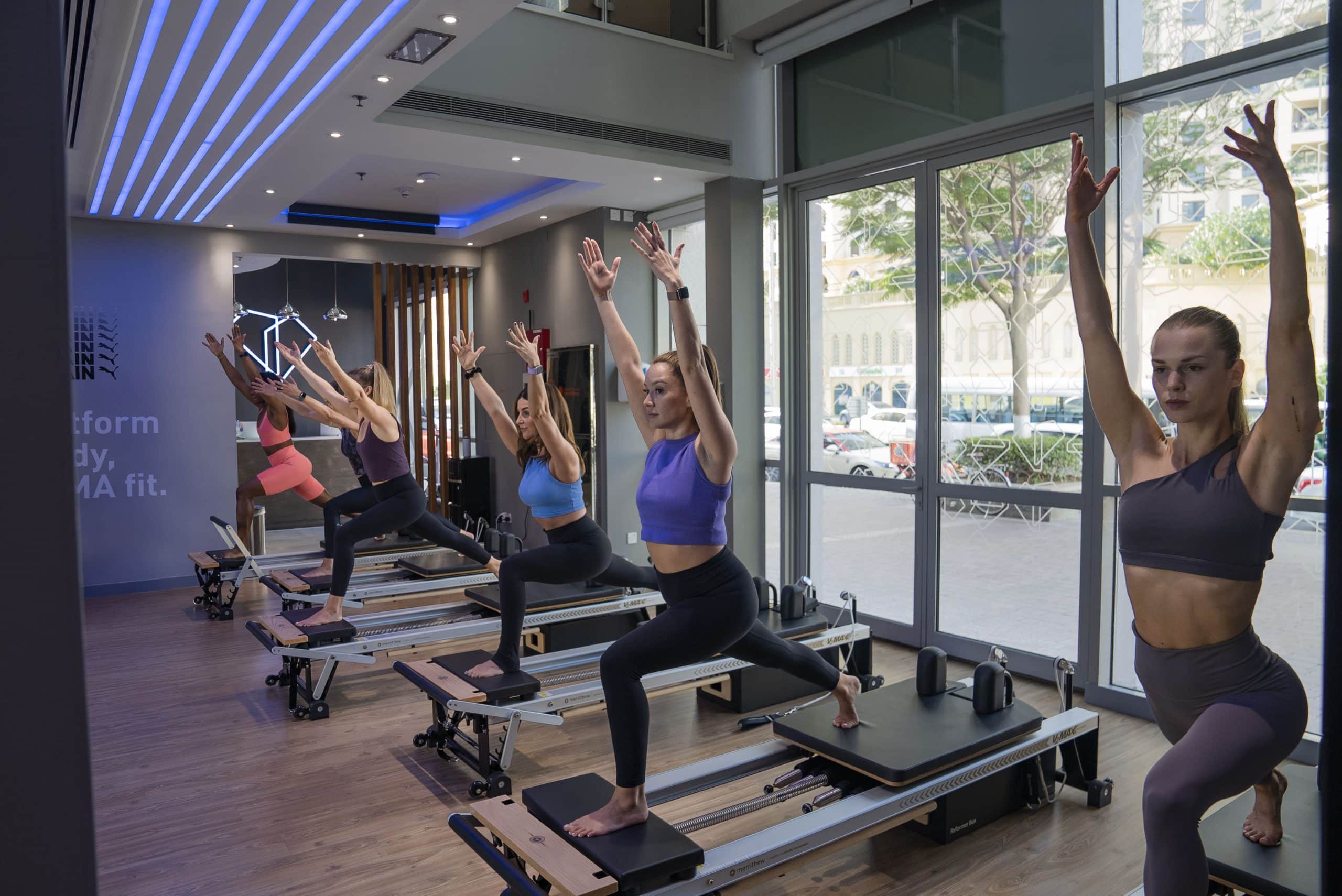Events

How Reformers Will Take Your Pilates Workout to the Next Level
When Joseph Pilates devised his ‘Contrology’ workouts nearly a century ago, his focus was on creating a strong, healthy body. After a childhood mired in illness, he created a series of 34 exercises based on deliberate, controlled movement. These moves used bodyweight for resistance, and apparatus like the Reformer machine, designed by Pilates himself. The best Reformer Pilates classes in Dubai are still centred around these same exercises and the Reformer machine itself.
What Is Reformer Pilates?
Classic Pilates when performed on a mat is excellent for building core stability and strength, while developing flexibility, endurance, and bodily awareness. The required control and focus on posture, alignment, and proper breathing mean it’s great for everyone from beginners to pro athletes. Also an ideal exercise for rehabilitation after injury, and throughout pregnancy, mat Pilates is a wonderful low-impact workout for strengthening and conditioning the major muscle groups.
A Reformer Pilates workout uses the same core movements and exercises that are performed in mat Pilates, but done on a Reformer machine. A Reformer machine comprises a sliding carriage attached to springs to create variable resistance, as well as ropes and pulleys. While it may look somewhat intimidating, or even medieval, we promise that using a Reformer machine is fun!
When performing the Pilates exercises on a Reformer, you are no longer working against gravity in the same way as during mat work. This alleviates pressure on joints and through the legs, while the springs mean you select which muscle groups to work, and how hard.
This ability to vary resistance and form means we can target a far more diverse range of muscles with Reformer Pilates. The different levels of tension the springs can create also means we can completely tailor the exercises to your needs and goals.
By performing the classic mat Pilates exercises on the Reformer in so many more positions, immeasurably more variety of movement can be achieved. With the aid of the pulleys and ropes, the same moves can be performed on the back, side, stomach, seated, or even kneeling. This keeps the workout exciting and your muscle groups guessing!
Is Reformer Pilates Better than Regular Pilates?
Both forms of Pilates are excellent at building core strength, improving balance and flexibility, and reducing injury risk. Improved muscular symmetry and postural alignment as well as increased muscle tone provide protection for the body’s core. A reduction in back pain is another benefit often reported by practitioners, as when the deep muscles which support the spine are strengthened, the back is supported.https://www.ocsmiddleeast.com/cargo-and-logistics-services
The extra tension and resistance that a Reformer can add means that you can push your workout that much further. More calories burned, greater endurance training, and even greater gains are all possible with a Reformer than when doing Pilates on a mat.
Since Reformer Pilates is performed on a moving carriage, this perpetual instability and dynamic movement requires constant balancing and coordination. We are demanding your body control the motion of the platform at all times- and keeping it from shifting while you move your body is hard work!
It’s not all endurance and muscle fatigue though- one of the greatest assets of the Reformer machine is: it’s great fun! Sliding backwards and forwards while your legs perform squats in the air is a fantastically freeing form of movement. Reformer Pilates is unlike any other workout in this regard, and we recommend everyone try it at least once.
Mat Pilates is ideal if you want a slower-paced workout with a greater focus on core strength and stability. Reformer Pilates provides a more dynamic, varied, and vigorous exercise class with a focus on a wider range of muscle groups. If that sounds like something that would suit you- or if you’re just looking for something a bit different- why not book a class today and find out what all the fuss is about?

